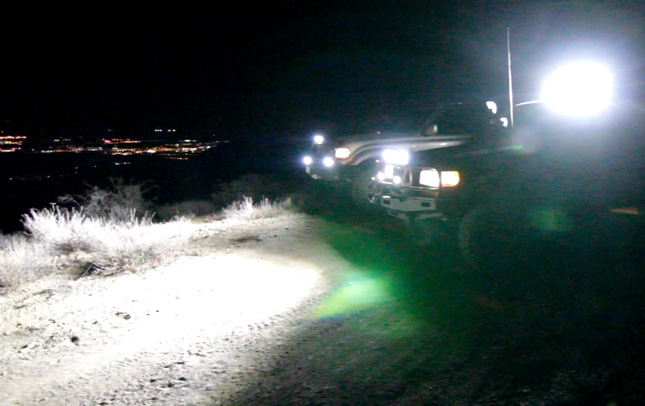Auxiliary lights are additional lights that go on the exterior of your vehicle. These lights are supposed to augment the car's existing headlights and fog lights, usually when more intense light is needed. They can be used any time, but are most often used at night, during bad weather, for off road driving, and when more light is needed to perform outdoor work.
Uses for Auxiliary Lights
Auxiliary lights have two main uses: They give the driver greater visibility during situations where visibility is hindered, and they make it easier for other cars on the road to see your car. Both of these features can increase driving safety significantly and make the purchase of auxiliary lights worth it.
Safety is not the only benefit that auxiliary lights provide, but it is the most important. Many people also like the enhanced look of auxiliary lights on their vehicle, and often get different colors of lights to suit their personal preferences. The installation of auxiliary lights may also increase the value of your vehicle.
Using Auxiliary Lights Appropriately
It is important to note that auxiliary lights are not headlights and cannot be used as such. It is still illegal to drive at night and in poor weather with your headlights off, even if you have your auxiliary lights on. Auxiliary lights are meant to be used in conjunction with your vehicle’s regular headlights when visibility is hindered. They can provide long-range illumination in front of the vehicle and light up distant objects in a way that headlights can't.
Types of Auxiliary Lights
There are three main types of auxiliary lights: driving lights, fog lights and off-road lights.
Driving lights
The most common and designed to see objects further down the road and offer light beyond what your vehicles high beam lights can. This type of light has a moderate beam width with a wider reach and is useful for low visibility conditions. The wider reach increases peripheral vision and makes it possible to see the side of the road. Driving lights are great when traveling at high speeds, and should be mounted about 14-30 inches from the ground to avoid blinding oncoming traffic.
Fog lights
Low horizontal cutoff to provide a wide range of illumination over a fairly short distance. The wider beam projects downward when mounted properly, reducing glare, and is great for enhancing visibility in poor weather conditions such as rain, fog, or snow. Fog lights should be mounted below the car’s bumper, 10-24 inches from the ground. When mounted correctly, they project the light below the fog, which helps you “see through” the fog.
Fog lights can be used in conjunction with the vehicle’s low-beam headlights, but their intention is to light up the road surface, curb and shoulder for safer driving in poor weather. Their limited range is most effective at low speeds, which makes sense since you wouldn’t want to be driving very fast in bad weather.
Off Road Lights
Provide added visibility for recreational trail driving and rugged terrain. Off-road lights come in a variety of sizes and configurations, and are more rugged than driving and fog lights. They typically aren’t street legal, so use your common sense and only use them in more rural areas and in areas that don’t get much traffic, because they can be pretty blinding. Another difference between off-road lights is placement. This type of lights can be mounted to a vehicle’s bumper, grille, and/or light bar.

Scene and Work lights
Auxiliary scene lights or work lights are commonly used on work and construction vehicles. The long range, narrow beam of off-road lights enable’s the user to spot hazards at a greater distance and are also ideal for hunters.
Which Should You Buy?
Which auxiliary light you buy depends on a variety of factors. One factor is the location in which you live, and the climate in this location. Do you experience a lot of fog or rain and are forced to drive at slower speeds? Or does your location experience more temperate climates with not a lot of change in weather conditions, so you are able to drive at faster speeds? Another factor is your lifestyle. Do you do a lot of off-road driving or does your job require the use of additional lighting on your vehicle? And of course personal preference is important as far as aesthetics. Many people add auxiliary lights simply because they like the way they look.
Regardless of your reasons, auxiliary lights add a level of safety you can’t always find in the lighting that comes standard with a vehicle. And that alone can be worth the purchase.



Post Comments
You must be logged in to post a comment.
click here to login